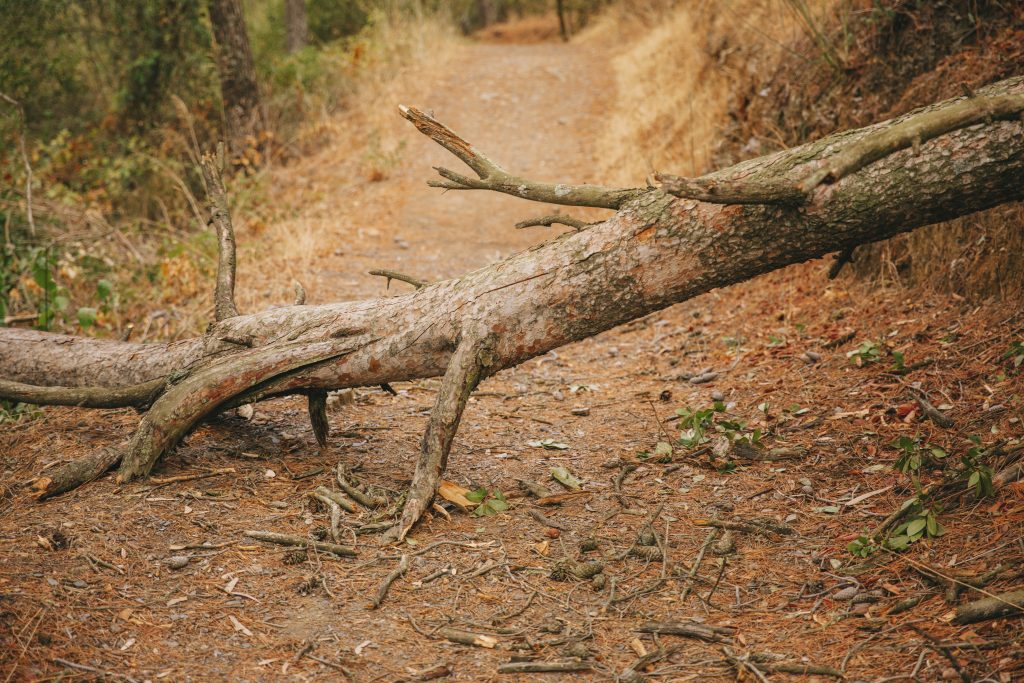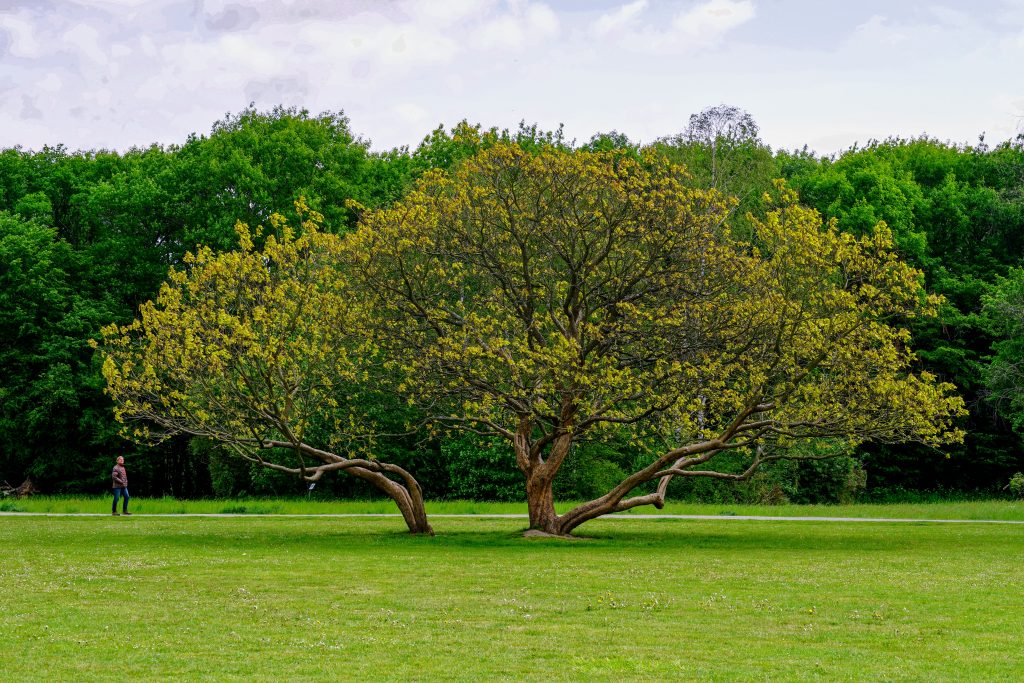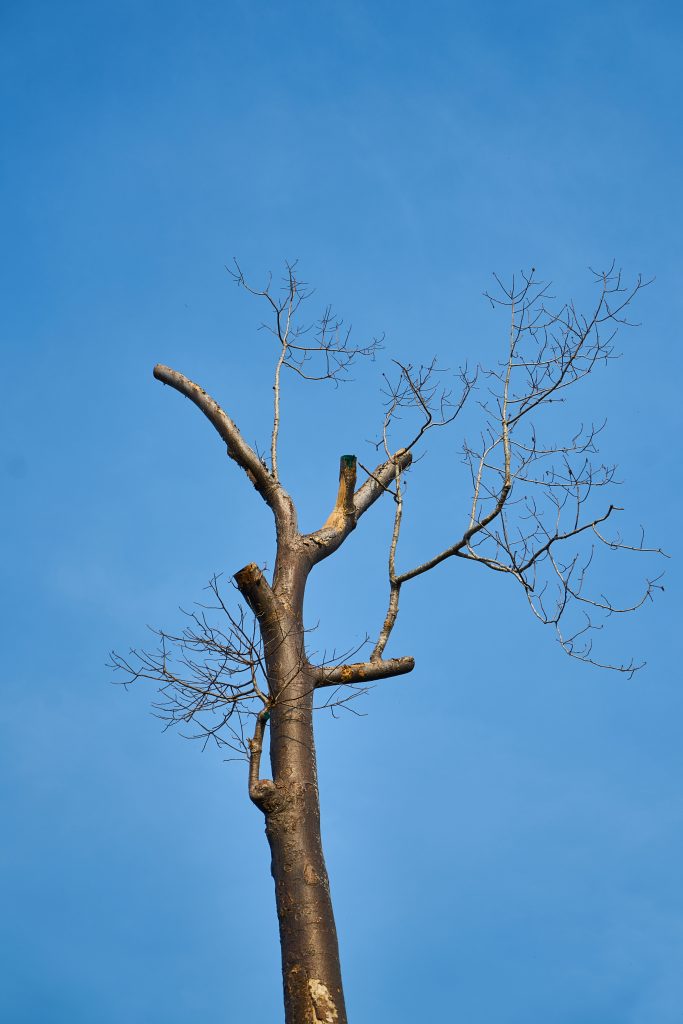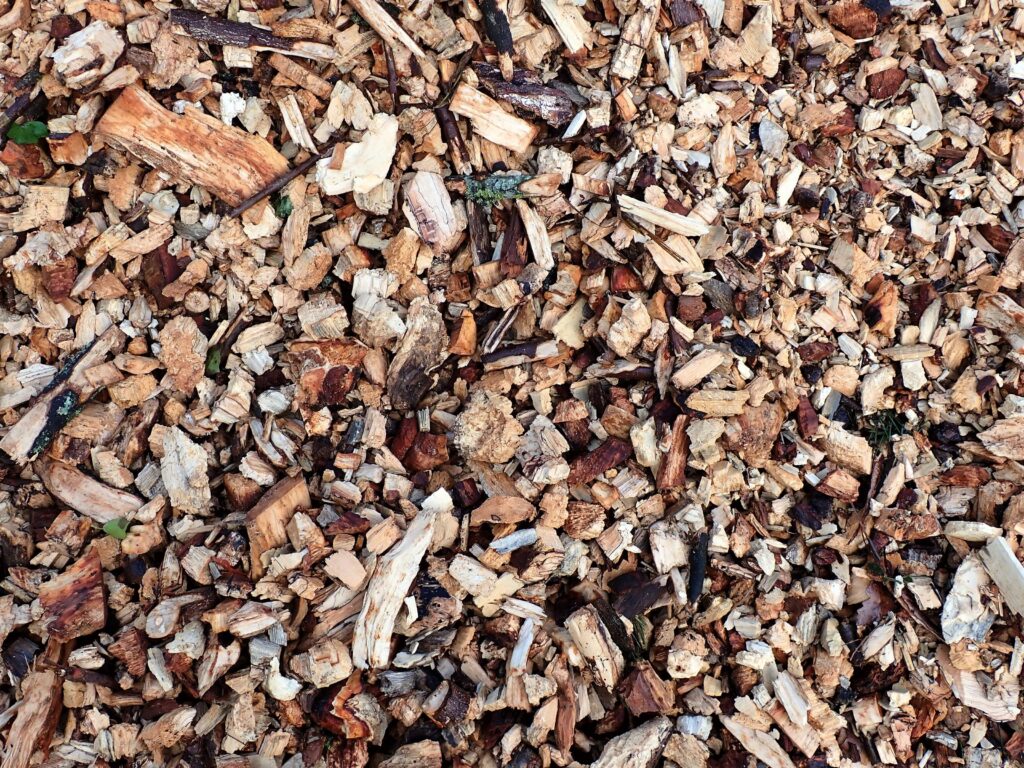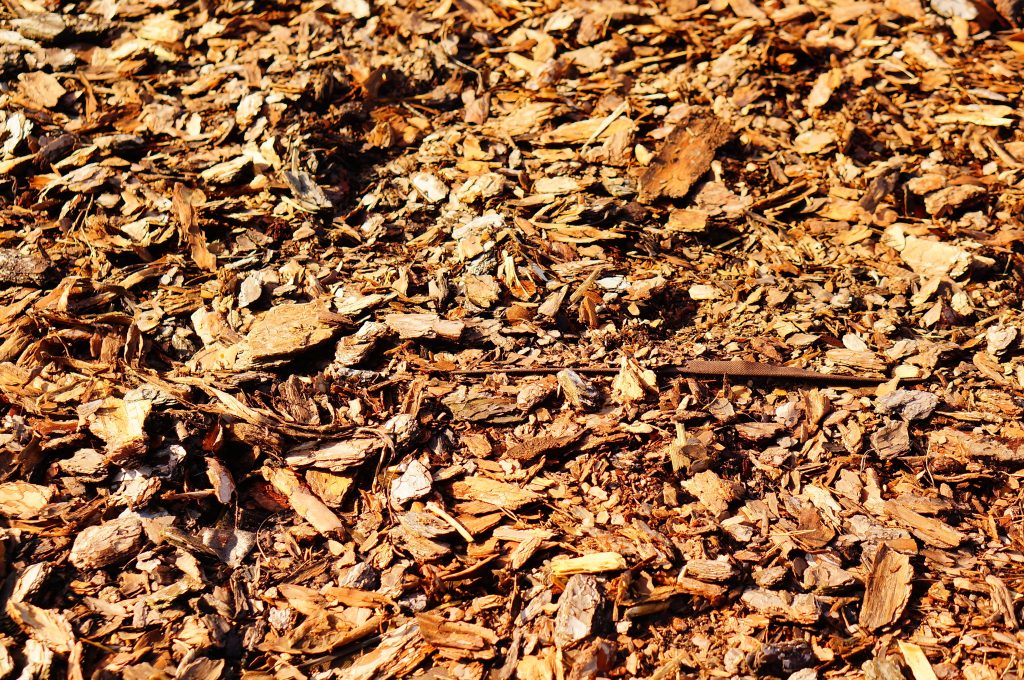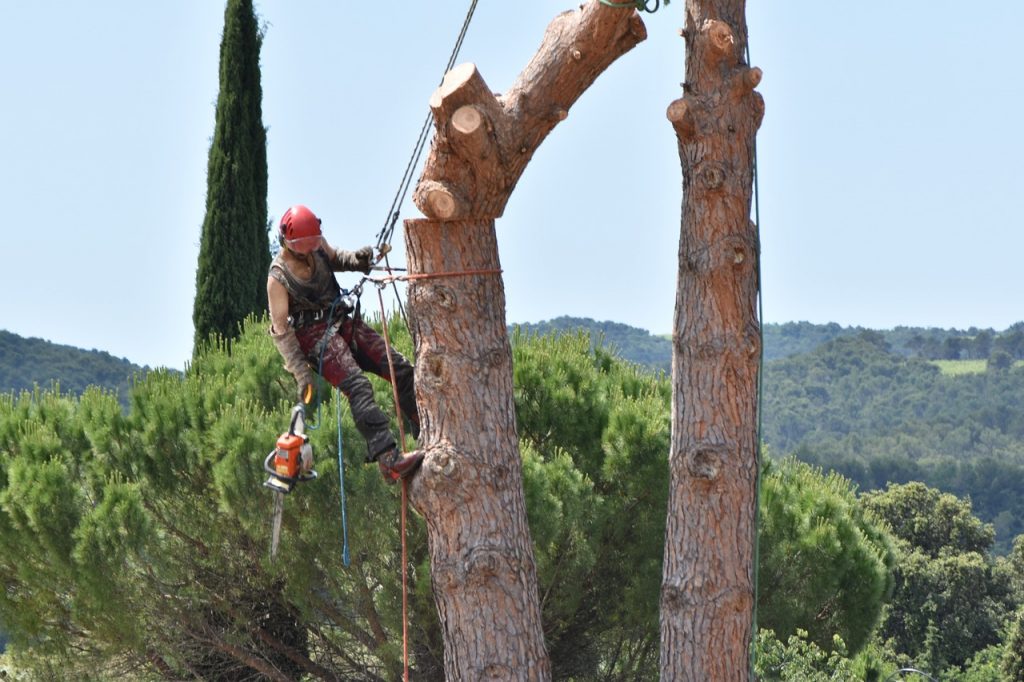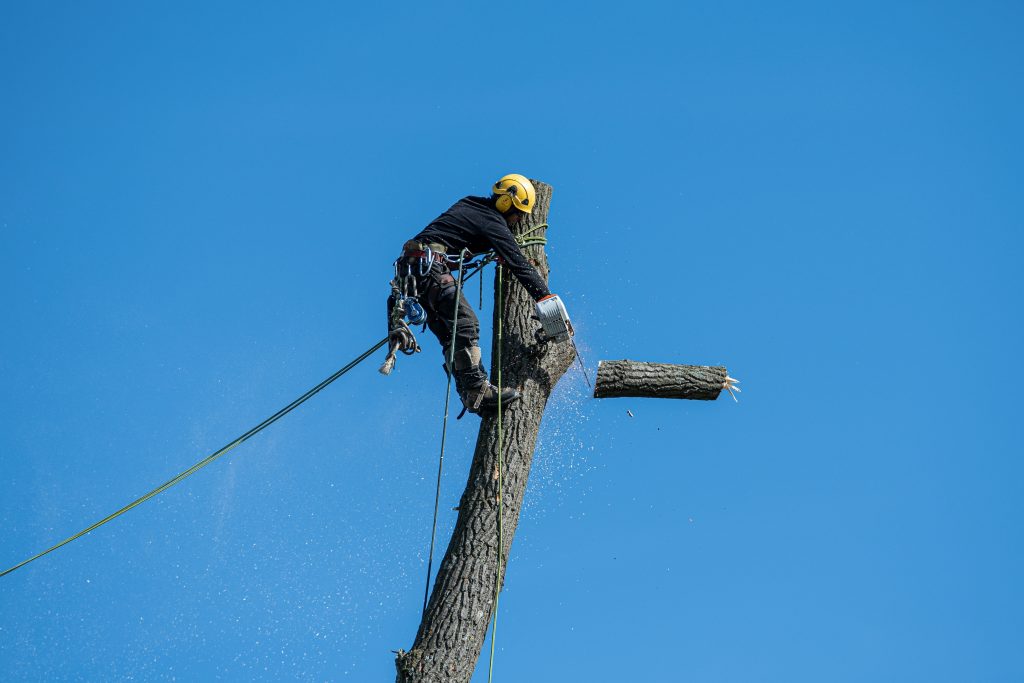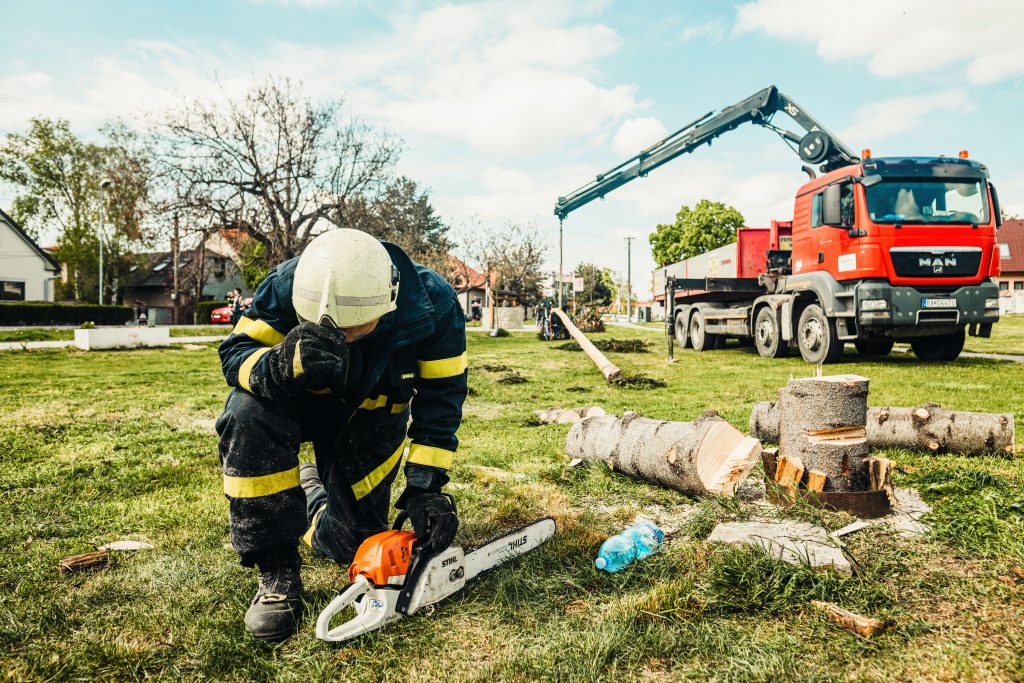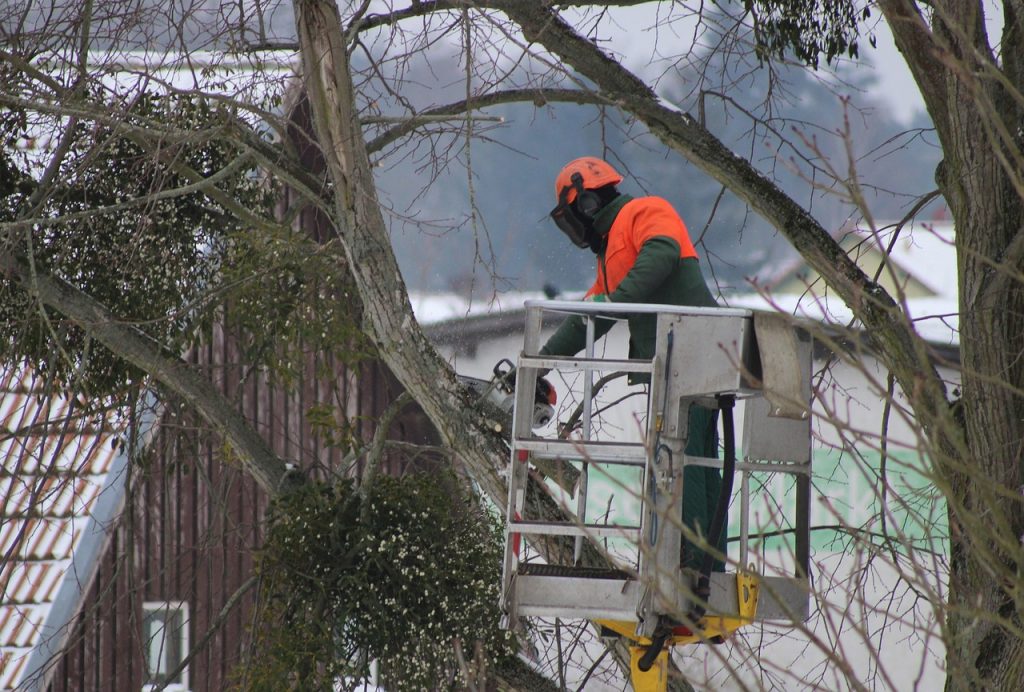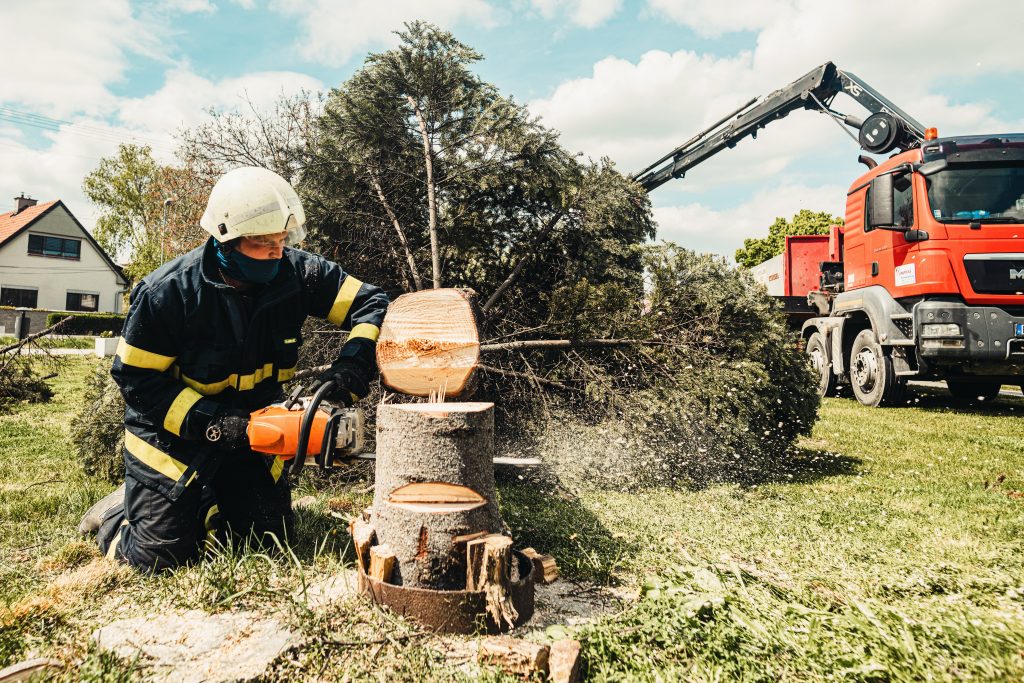What Do Tree Removal Companies Do With the Wood
What Do Tree Removal Companies Do With the Wood
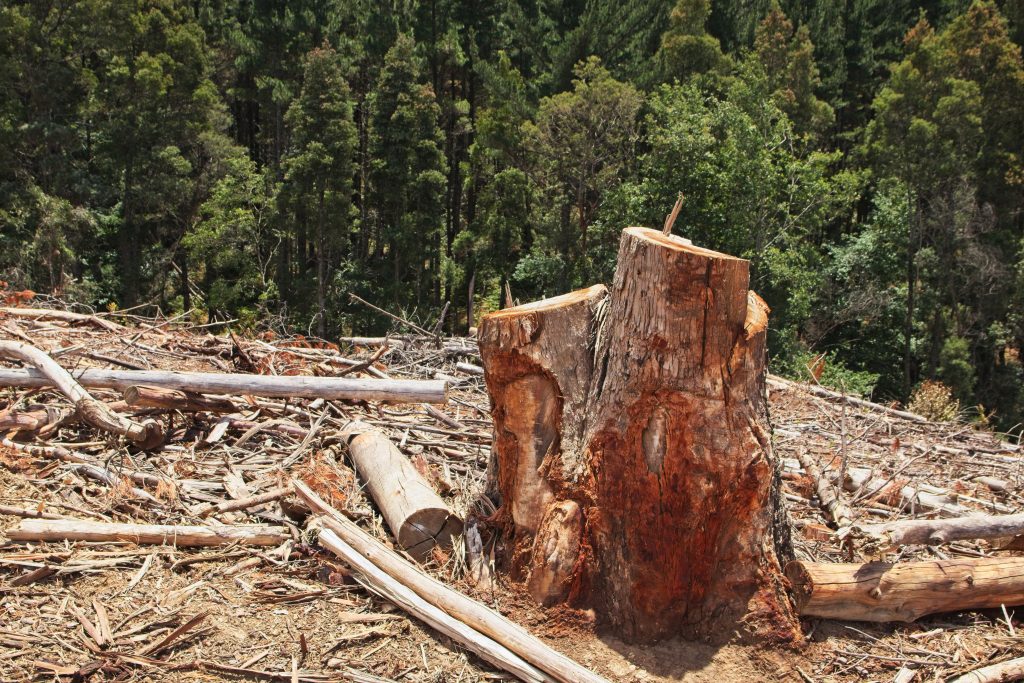
Imagine you’re standing in a forest, surrounded by towering trees. Have you ever wondered what happens to those trees when they need to be removed? Well, tree removal companies have a crucial role in responsibly handling the wood. They don’t just discard it; they have a deeper purpose. In this article, we will explore what tree removal companies do with the wood and how they contribute to the cycle of sustainability. Get ready to delve into the fascinating world of wood recycling and discover the many possibilities that lie within.
Key Takeaways
- Wood waste from tree removal is converted into mulch, which improves soil health, retains moisture, and suppresses weed growth.
- Tree removal companies find innovative uses for wood waste, such as transforming it into usable lumber for woodworking and construction projects.
- Wood recycling contributes to sustainable practices and the conservation of resources by reducing the demand for new timber and minimizing waste going to landfills.
- Wood recycling also helps reduce greenhouse gas emissions and dependence on non-renewable resources by using wood waste as biomass energy.
Introduction to Wood Recycling
You may be wondering, what do tree removal companies do with the wood they collect? Well, when it comes to wood recycling, there are several innovative uses for the wood waste that is generated during tree removal. Here are three examples that highlight the benefits of wood recycling and the creative ways in which the wood can be repurposed:
- Mulch: One common use of wood waste is to convert it into mulch. The wood is chipped and shredded, creating a natural and organic material that can be used to improve soil health, retain moisture, and suppress weed growth in gardens and landscapes.
- Biomass Energy: Another option for wood waste is to utilize it as biomass energy. The wood is converted into wood pellets or chips, which can be burned as a renewable source of energy. This sustainable alternative to fossil fuels helps reduce greenhouse gas emissions and dependence on non-renewable resources.
- Woodworking and Construction: Wood waste can also be transformed into usable lumber for various woodworking and construction projects. By processing and treating the wood, it can be repurposed into furniture, flooring, decking, and even structural components for buildings.
These examples demonstrate the versatility and value of wood recycling. By finding innovative uses for wood waste, tree removal companies contribute to sustainable practices and the conservation of resources. Now, let’s delve into the fascinating history of wood recycling.
History of Wood Recycling
The history of wood recycling dates back several centuries, with people finding creative ways to repurpose and reuse this valuable resource. Throughout time, humans have recognized the importance of wood as a versatile material and have developed various techniques to recycle and reuse it. From using old timber to build new structures to transforming wood waste into fuel, wood recycling has always been a practice rooted in ingenuity and sustainability.
Innovations in wood recycling have continued to evolve over the years. Today, advanced technologies and techniques enable us to make the most of every piece of wood, minimizing waste and maximizing its potential. Wood recycling facilities now employ state-of-the-art machinery to process and transform discarded wood into a range of products, including mulch, particleboard, and biomass fuel.
Looking towards the future, the possibilities for wood recycling are endless. As we strive for a more sustainable and eco-friendly society, the demand for recycled wood products will only continue to grow. Researchers and experts in the field are constantly exploring new ways to further improve wood recycling processes, such as developing more efficient methods for removing contaminants and finding innovative uses for recycled wood.
In the next section, we will provide you with some helpful tips on how to properly recycle and repurpose wood, ensuring that it remains a valuable resource for generations to come.
Tips
When it comes to wood recycling options, there are several routes you can take. You could consider utilizing the wood for creative repurposing ideas, such as furniture or art installations. However, it’s important to also take into account the environmental impact considerations, as different types of wood have varying levels of sustainability and carbon footprint.
Wood Recycling Options
One option for recycling wood is to repurpose it into furniture or other useful items. When it comes to tree removal, the wood can be salvaged and transformed into beautiful and functional pieces. Different types of wood have unique characteristics and uses. For instance, hardwoods like oak and maple are often favored for furniture making due to their durability and aesthetic appeal. Softwoods such as pine and cedar are commonly used for outdoor projects like decking or fencing. Another option for recycling wood is wood chip mulching. Wood chips can be used as a natural mulch to help retain moisture, suppress weeds, and improve soil health. Additionally, wood can be used for biomass energy production, where it is burned to generate heat or electricity. This sustainable practice helps reduce reliance on fossil fuels. Now, let’s explore some creative repurposing ideas for wood.
Creative Repurposing Ideas
Let’s take a look at some creative ways to repurpose wood. As an arborist or forestry specialist, you understand the value of utilizing wood in innovative ways. Different types of wood have unique characteristics that make them suitable for various upcycling projects. For example, hardwoods like oak and maple can be transformed into beautiful furniture pieces or decorative items. Softwoods such as pine and cedar are commonly used in outdoor projects like garden benches or birdhouses. Wood from fruit trees like cherry or walnut can be salvaged and turned into cutting boards or bowls. By repurposing wood, we can extend its lifespan and reduce waste. This not only benefits the environment but also encourages sustainable practices in the woodworking industry. Now, let’s explore the environmental impact considerations when it comes to wood utilization.
Environmental Impact Considerations
The environmental impact of repurposing wood can be significant, as it helps reduce waste and promotes sustainable practices in the woodworking industry. As an arborist or forestry specialist, you possess a deep understanding of tree biology, species identification, and forestry practices. With this knowledge, you can provide detailed information about the various uses and characteristics of different types of wood. By utilizing technical terms and concepts related to tree care, tree removal, and wood utilization, you can explain complex processes and techniques in a clear and concise manner, catering to an audience familiar with arboriculture or forestry. With your objective and scientific mindset, you present facts and evidence-based information, rather than personal opinions. This approach ensures unbiased and accurate insights into tree removal and wood utilization, contributing to carbon footprint reduction and effective waste management. Understanding the traits of wood recycling further enhances your understanding of sustainable practices.
Traits of Wood Recycling
Wood recycling involves breaking down used wood products into smaller pieces, which can then be repurposed for various applications. As an arborist or forestry specialist, you understand the importance of sustainable wood repurposing and the benefits it brings to the environment. By recycling wood, you are not only reducing the amount of waste sent to landfills but also conserving natural resources and reducing the demand for new timber.
Different types of wood have various characteristics and uses. For example, hardwoods like oak and maple are often used for furniture and flooring due to their durability and aesthetic appeal. Softwoods, such as pine and cedar, are commonly used for construction and outdoor projects because of their strength and resistance to decay.
When it comes to wood recycling, there are several steps involved in the process. These steps include collection and sorting of wood waste, removal of contaminants such as nails and screws, and shredding or grinding the wood into smaller pieces. These smaller wood pieces, known as wood chips or mulch, can then be used in landscaping, biomass energy production, or as raw material for manufacturing wood-based products.
Steps in Wood Recycling
One important step in wood recycling is the removal of contaminants such as nails and screws. This ensures that the recycled wood can be safely processed and used in various applications. To understand the process of wood recycling, it is crucial to know the techniques involved and the benefits it offers.
Here are three key aspects of wood recycling:
- Sorting: The first step in wood recycling is to sort the different types of wood based on their characteristics. This allows for efficient processing and ensures that the right wood is used for the right purpose.
- Grinding: Once the wood is sorted, it is then sent through a grinding machine. This machine breaks down the wood into smaller pieces, making it easier to handle and process.
- Separation: After grinding, the wood is separated into different components, such as sawdust, chips, and larger pieces. These components can then be used for various purposes, including mulch, biofuel, or composite materials.
Wood recycling techniques offer several benefits, both environmental and economic. By recycling wood, we reduce the demand for new timber and minimize the amount of waste going to landfills. Additionally, recycled wood can be used in sustainable construction, contributing to a more eco-friendly approach.
Transition: Now that you understand the steps involved in wood recycling, let’s explore the goals and benefits of this process in more detail.
Goals
Sorting and grinding are essential steps in the wood recycling process. Wood recycling goals include sustainable wood repurposing, reducing waste, and promoting environmental conservation. By recycling wood, we can minimize the need for new timber extraction and decrease the strain on our forests. This not only helps to preserve natural resources but also reduces greenhouse gas emissions associated with the production of new wood products.
To understand the significance of wood recycling, let’s take a look at the table below, showcasing the environmental benefits of sustainable wood repurposing:
| Environmental Benefits | Description |
|---|---|
| Conservation of Resources | Recycling wood reduces the demand for new timber, conserving valuable natural resources. |
| Energy Saving | Repurposing wood saves energy compared to manufacturing new wood products from scratch. |
| Waste Diversion | Recycling wood diverts it from landfills, reducing methane emissions and promoting waste management. |
| Carbon Footprint Reduction | By recycling wood, we reduce the need for logging, which helps to limit deforestation and minimize carbon emissions. |
Sustainable Habits
To promote sustainable habits, you can start by incorporating wood recycling into your daily routine. As an arborist or forestry specialist, you possess a deep understanding of tree biology, species identification, and forestry practices. You are well-versed in the various uses and characteristics of different types of wood. By utilizing this knowledge, you can actively contribute to sustainable practices and community involvement.
Wood recycling is an essential aspect of sustainable forestry. When trees are removed, whether due to disease, storm damage, or development, the wood can be repurposed rather than discarded. This not only reduces waste but also minimizes the need for harvesting new trees. By recycling wood, you help conserve natural resources and reduce carbon emissions associated with tree removal and wood utilization.
There are various ways to incorporate wood recycling into your daily routine. You can start by repurposing fallen branches or logs into firewood or mulch for your garden. Additionally, you can donate wood to local community organizations or woodworking enthusiasts who can make use of it for various projects. Some communities even have wood recycling centers where you can drop off larger pieces of wood for repurposing.
A Real-Life Story
In this real-life story, a local community came together to repurpose fallen branches and logs into beautiful furniture pieces, showcasing the positive impact of wood recycling. As an arborist, you understand the importance of sustainable practices when it comes to tree removal and wood utilization. This real-life example illustrates the success that can be achieved when communities prioritize recycling and repurposing wood.
In this particular case, the fallen branches and logs were carefully collected and transported to a local woodworking shop. There, skilled craftsmen identified the different types of wood and assessed their quality and characteristics. They recognized the potential of these discarded materials and saw an opportunity to create something beautiful and functional.
Working with precision and expertise, the craftsmen transformed the branches and logs into stunning furniture pieces. They carefully selected the appropriate type of wood for each specific item, taking into consideration factors such as durability, grain patterns, and color. Through their skillful work, they were able to bring out the natural beauty of the wood, creating unique and sustainable furniture pieces.
This real-life success story demonstrates the transformative power of wood recycling. By repurposing fallen branches and logs, the community not only reduced waste but also created something valuable and long-lasting. It serves as a reminder that with a little creativity and craftsmanship, discarded materials can be given a second life, resulting in beautiful and sustainable creations.
With this inspiring example in mind, let’s delve into the quotes that highlight the importance of wood recycling and the potential it holds for sustainable practices.
Quotes
Let’s explore some quotes that emphasize the significance of wood recycling and the potential it offers for sustainable practices. As an arborist or forestry specialist, you understand the importance of utilizing wood in an environmentally friendly manner. Wood recycling benefits both the environment and the economy by reducing waste and promoting renewable resources.
One quote that resonates with the benefits of wood recycling comes from Michael Brune, the Executive Director of the Sierra Club. He states, “Recycling is not only a noble environmental practice, it is also an economic necessity.” This highlights the dual advantages of wood recycling, as it not only reduces the strain on our forests but also contributes to a thriving green economy.
Another quote from David Suzuki, a renowned environmentalist, states, “Wood is the most sustainable, renewable and beautiful material we have.” This quote emphasizes the inherent qualities of wood that make it an ideal material for recycling. Wood can be repurposed for various uses, such as furniture, construction materials, and even biofuel, making it a versatile resource.
In terms of wood recycling processes, it is crucial to understand that different types of wood have varying characteristics and uses. Softwood, such as pine or fir, is often used in construction due to its strength and affordability. Hardwood, such as oak or maple, is prized for its durability and aesthetic appeal, making it suitable for furniture and flooring.
Transitioning into the subsequent section about ‘secrets,’ it is important to note that successful wood recycling requires a combination of knowledge, techniques, and innovation. By delving into the secrets of wood recycling, we can unlock even more potential for sustainable practices and resource conservation.
Secrets
After gathering some insightful quotes about the practices of tree removal companies, let’s now dive into the secrets behind what they do with the wood. Arborists and forestry specialists are aware of the importance of sustainable practices when it comes to tree removal and wood utilization.
One secret lies in the fact that not all wood from tree removal goes to waste. In many cases, the wood is salvaged and repurposed for various uses. Different types of wood have unique characteristics that make them suitable for specific applications. For example, hardwoods like oak and maple are often used for furniture and flooring due to their durability and aesthetic appeal.
Another secret is that tree removal companies often have partnerships with local sawmills and woodworkers. This allows them to ensure that the wood is properly processed and utilized. By working together, they can maximize the value of the wood and minimize waste.
These sustainable practices are crucial for preserving our natural resources and reducing environmental impact. By repurposing the wood from tree removals, we can extend its lifespan and reduce the need for harvesting new trees.
With these secrets in mind, let’s now explore some insights on wood recycling and how it contributes to a more sustainable future.
Insights on Wood Recycling
You might be surprised to learn that wood recycling plays a significant role in creating a more sustainable future. As an arborist or forestry specialist, I can provide you with detailed information about the various uses and characteristics of different types of wood. Wood recycling involves the innovative repurposing of wood waste, ensuring that it doesn’t end up in landfills and can instead be turned into valuable products.
One of the benefits of wood recycling is the conservation of natural resources. By reusing wood, we reduce the need for harvesting new trees, preserving our forests and the biodiversity they support. Additionally, recycling wood helps mitigate climate change. When wood decomposes in landfills, it releases methane, a potent greenhouse gas. By diverting wood waste from landfills and recycling it, we can significantly reduce methane emissions.
Wood recycling also has economic benefits. Repurposed wood can be used in a wide range of applications, such as construction, furniture, and even bioenergy production. This creates job opportunities and stimulates local economies. Furthermore, recycling wood reduces the costs associated with waste disposal, saving both individuals and businesses money.
In the next section, we will explore the numerous benefits of wood recycling in more detail.
Benefits of Wood Recycling
When it comes to the benefits of wood recycling, it’s important to consider the positive impact it has on both the environment and the economy. As an arborist or forestry specialist, you understand the intricate details of tree biology, species identification, and forestry practices. With this knowledge, you can explain the various uses and characteristics of different types of wood, including the innovative uses for recycled wood.
Wood recycling offers several benefits. Firstly, it helps to reduce the amount of wood waste that ends up in landfills, minimizing the environmental impact. By recycling wood, you can provide a sustainable solution that conserves natural resources and reduces greenhouse gas emissions. Secondly, the recycling process itself creates job opportunities and stimulates the economy. Companies specializing in wood recycling contribute to the local economy by creating employment and generating revenue.
Recycled wood can be used for a variety of purposes. It can be transformed into mulch for landscaping, animal bedding, or even used in the production of composite materials. Additionally, recycled wood can be repurposed for construction, furniture, and other woodworking projects. By utilizing recycled wood, we can reduce the demand for new timber, which in turn reduces deforestation and helps to preserve our forests.
In the subsequent section, we will delve into the lessons we can learn from wood recycling and how they can guide us towards more sustainable practices.
Lessons
When it comes to sustainable wood repurposing, it is important to consider the environmental impact and utilize creative recycling methods. As an arborist or forestry specialist, you understand the significance of responsibly utilizing wood resources. By repurposing wood, you can not only minimize waste but also contribute to a more sustainable and eco-friendly approach to tree removal and wood utilization.
Sustainable Wood Repurposing
If you’re wondering what tree removal companies do with the wood, they often repurpose it in sustainable ways. Arborists and forestry specialists have a deep understanding of tree biology, species identification, and forestry practices, allowing them to provide detailed information about the various uses and characteristics of different types of wood. When it comes to sustainable construction, the repurposing of wood plays a crucial role. Tree removal companies often partner with carpenters, furniture makers, and construction companies to turn the removed wood into valuable products. This not only reduces waste but also promotes a circular economy by giving new life to the wood. Some innovative uses for repurposed wood include reclaimed flooring, furniture, and decorative items. By utilizing the wood in these ways, tree removal companies contribute to the reduction of deforestation and promote the conservation of resources. Transitioning to the next section, it’s important to consider the environmental impact of tree removal and wood utilization.
Environmental Impact Considerations
Partnering with professionals in the construction industry allows for the repurposing of wood in sustainable ways, reducing waste and promoting a circular economy. When considering the environmental impact of tree removal, it is important to take into account the carbon footprint reduction that can be achieved through alternative uses of the wood. By utilizing the expertise of arborists and forestry specialists, you can ensure that the wood is properly identified and assessed for its potential uses. Different types of wood have varying characteristics and can be used in a multitude of ways, such as construction materials, furniture, or even biomass for energy production. Understanding the technical aspects of tree care and wood utilization is crucial in making informed decisions that not only minimize waste but also maximize the value and lifespan of the wood. By repurposing wood, we can contribute to a more sustainable future and reduce our impact on the environment. Transitioning to the topic of creative wood recycling, let’s explore even more innovative ways to give new life to this valuable resource.
Creative Wood Recycling
When it comes to tree removal, it’s crucial to consider the environmental impact and find sustainable solutions for the wood. However, there are also some innovative ways to recycle and upcycle the wood from removed trees. Wood recycling innovations have emerged in recent years, allowing tree removal companies to minimize waste and maximize the potential of the wood. One popular trend is artistic wood upcycling, where skilled craftsmen transform tree trunks and branches into beautiful and functional pieces of furniture or artwork. This not only gives the wood a new lease on life but also adds value to it. By exploring these creative options, tree removal companies can contribute to a more sustainable and environmentally friendly approach to tree removal and wood utilization. Speaking of sustainable practices, let’s now delve into the routines {yt} that tree removal companies follow to ensure efficient and safe operations.
Routines
Tree removal companies typically chip the wood into mulch or firewood for sale or reuse. These routines are part of sustainable practices that help in minimizing waste and maximizing the use of the wood. After a tree is removed, the logs and branches are processed using specialized equipment to produce wood chips. These wood chips have various applications. They can be used as mulch, which helps retain moisture in the soil, suppress weed growth, and enhance the aesthetics of gardens and landscapes. Wood chips can also be transformed into firewood, providing a renewable source of heat during colder months.
The choice of wood chips or firewood depends on factors like the species of the tree and its size. Arborists and forestry specialists have a deep understanding of tree biology and species identification, allowing them to determine the most suitable use for the wood. They consider the characteristics of different types of wood, such as density, moisture content, and burnability, to ensure optimal utilization. These professionals follow technical guidelines and use their expertise to provide accurate insights into tree removal and wood utilization.
Moving on to the pros and cons of these practices…
Pros and Cons
After a tree has been removed, it’s important to consider the most appropriate wood disposal methods. There are several options available, each with its own set of pros and cons. As an arborist or forestry specialist, you understand the economic implications of these choices and can provide valuable insights.
One common method of wood disposal is chipping. The branches and smaller pieces of the tree can be processed into wood chips, which have a variety of uses. They can be used as mulch in gardens and landscaping, or as fuel for biomass power plants. Chipping is a cost-effective and environmentally friendly option, as it reduces waste and promotes sustainability.
Another option is to sell the wood. If the tree is of high quality and suitable for lumber, it can be cut into logs and sold to sawmills or woodworkers. This can generate income and contribute to the local economy. However, selling the wood requires additional labor and transportation costs.
Alternatively, the wood can be used for firewood. This is a popular choice, especially in areas with colder climates. Firewood can be sold or used for personal heating purposes. However, it may not be a viable option if there is a surplus of firewood in the area.
Dos and Dont’s
It’s important to be aware of the dos and don’ts when it comes to hiring a professional for tree removal. To help you navigate this process, here are some key guidelines to keep in mind:
| Do’s | Don’ts |
|——-|———-|
| Do research and choose a reputable tree removal company. | Don’t hire an unlicensed or uninsured contractor. |
| Do ask for references and check online reviews. | Don’t rely solely on price as the deciding factor. |
| Do ask about their equipment and safety procedures. | Don’t overlook the importance of proper permits and documentation. |
| Do get a written estimate and contract. | Don’t make a decision without understanding the wood disposal plan. |
Now that you have a better understanding of the dos and don’ts, let’s delve into the mistakes to avoid when hiring a tree removal professional. By being aware of these pitfalls, you can ensure a smooth and successful tree removal process.
Mistakes to Avoid
One mistake to avoid when hiring a professional for tree removal is not checking for proper permits and documentation. It may seem like a minor detail, but it can have significant consequences. Hiring a tree removal company without the necessary permits and documentation can lead to legal issues and fines. It is essential to ensure that the company you hire has the proper permits and is following all local regulations and guidelines. This will not only protect you from potential legal troubles but also ensure that the tree removal is carried out safely and responsibly.
Another common misconception to avoid is assuming that all tree removal companies will automatically take care of the wood. While some companies may offer wood utilization services, it is not always a standard practice. It is important to discuss this aspect with the tree removal company upfront and clarify whether they will be removing and disposing of the wood or if there are additional charges or arrangements for wood utilization.
Key Takeaways
Let’s recap the key takeaways from this topic. As an arborist or forestry specialist, you have a deep understanding of tree biology, species identification, and forestry practices. You know that when it comes to tree removal, the fate of the wood doesn’t have to be a waste. There are wood recycling methods and sustainable wood repurposing techniques that can be employed to give the wood a second life.
When it comes to wood recycling methods, there are several options available. One common method is chipping the wood into mulch, which can then be used for landscaping or as a soil amendment. Another method is to convert the wood into biomass, which can be used as a renewable source of energy. Additionally, the wood can be salvaged and repurposed for furniture, flooring, or other construction materials.
By utilizing these wood recycling methods, we can reduce waste and maximize the value of the wood. This not only benefits the environment but also contributes to a more sustainable and responsible approach to tree removal.
Now, let’s move on to the specific action steps for wood recycling and sustainable wood repurposing.
Specific Action Steps for Wood Recycling
When it comes to wood recycling, there are several specific action steps that can be taken to make the most of the resources at hand. Wood chip mulching is a popular option, which involves using wood chips as a protective layer on soil to retain moisture and suppress weed growth. Biomass energy production is another avenue to explore, utilizing wood waste to generate renewable energy. Additionally, the wood from tree removals can be repurposed for furniture and crafts, showcasing the beauty and versatility of different wood species.
Wood Chip Mulching
You can use wood chip mulching as a way to repurpose the wood left over from tree removal. Wood chip mulching is a technique that involves spreading a layer of wood chips around plants or trees to provide various benefits. It helps to suppress weed growth and conserve moisture in the soil, reducing the need for irrigation. Additionally, wood chip mulch slowly decomposes over time, enriching the soil with organic matter and nutrients. It also acts as insulation, protecting plants from extreme temperatures. In addition to its use in gardening, wood chips can be utilized in playgrounds as a safe and natural surface material. By repurposing the wood chips from tree removal, you can contribute to sustainable and eco-friendly practices. Transitioning into the next section on biomass energy production, it is important to note that wood chips can also be used as a renewable source of energy.
Biomass Energy Production
After wood chip mulching, another important way that tree removal companies utilize the wood waste is through biomass power generation. Biomass power plants generate electricity by burning organic materials like wood chips, sawdust, and other wood waste products. This process releases heat, which is then used to create steam that drives turbines to produce electricity. Wood waste utilization for biomass power generation is an environmentally friendly alternative to fossil fuels, as it reduces greenhouse gas emissions and promotes the use of renewable energy sources. Additionally, this method helps to minimize waste by turning tree debris into a valuable energy resource. By harnessing the energy potential of wood waste, tree removal companies contribute to sustainable and efficient energy production. Now, let’s delve into the fascinating world of wood utilization in furniture and crafts.
Furniture and Crafts
Crafters and furniture makers often repurpose wood waste from tree removal projects to create beautiful and unique pieces. As an arborist or forestry specialist, you have a deep understanding of tree biology, species identification, and forestry practices. You are knowledgeable about the various uses and characteristics of different types of wood. When it comes to furniture restoration and woodworking projects, you can provide detailed information on how to select the right wood for the job. From oak to maple to cherry, each type of wood has its own distinct properties and aesthetics. You understand the importance of properly drying and treating the wood to prevent warping and decay. With your technical expertise, you can explain complex processes and techniques in a clear and concise manner, catering to an audience with a background in arboriculture or forestry. Your objective and scientific mindset allow you to present unbiased and accurate insights into the topic of tree removal and wood utilization. So, when it comes to repurposing wood waste, you can guide crafters and furniture makers in creating stunning pieces that showcase the natural beauty of the wood.
Frequently Asked Questions
Are There Any Legal Restrictions or Permits Required for Tree Removal Companies to Recycle Wood?
Tree removal companies may have legal requirements and permits for recycling wood. These regulations ensure environmentally responsible practices. Recycling wood can have a positive impact by reducing waste and promoting sustainability in the forestry industry.
How Do Tree Removal Companies Determine Which Wood Can Be Recycled and Which Cannot?
Determining recyclable wood is based on factors such as species, condition, and size. Tree removal companies assess these characteristics to determine if wood can be recycled. They prioritize transparency in the recycling process to ensure sustainable wood utilization.
Are There Any Health or Safety Hazards Associated With Wood Recycling That Customers Should Be Aware Of?
When it comes to wood recycling, there are some health risks and environmental impacts to be aware of. Wood dust can cause respiratory issues, and the chemicals used in treating certain types of wood can be harmful if not handled properly.
What Happens to the Wood That Cannot Be Recycled by Tree Removal Companies?
After tree removal, companies use various wood disposal methods. Some wood can’t be recycled due to its condition or species. It may be chipped for mulch, used for firewood, or disposed of in landfills. Environmental impact varies depending on the method used.
Can Tree Removal Companies Provide Customers With Documentation or Proof of the Wood Recycling Process for Transparency Purposes?
Yes, tree removal companies can provide customers with documentation or proof of the wood recycling process for transparency. This helps customers see the benefits of wood recycling for the environment and understand the responsible practices used.
If you need a tree service in Utah, you can call:
Truco Services, Inc.
4640 Commerce Drive
Murray, Utah 84107
(801) 466-8044
https://truetreeservices.com/
